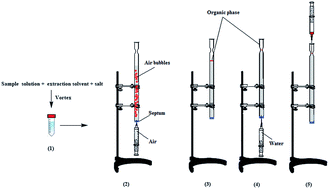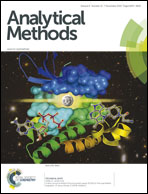Development of combined salt- and air-assisted liquid–liquid microextraction as a novel sample preparation technique
Abstract
A new, simple and sensitive method based on a combination of salt-assisted liquid–liquid microextraction (SALLME) with an aeration process, namely, salt- and air-assisted liquid–liquid microextraction (SAALLME), coupled with high-performance liquid chromatography (HPLC), has been developed for the quantitative analysis of β-naphthol, naphthalene and anthracene as model analytes. In this new technique, the centrifugation step has been replaced with an aeration process. In the proposed technique, the extraction solvent and salt are added into the aqueous sample solution and dissolved using a vortex. Phase separation is performed via motion of air bubbles from the bottom to the top of extraction tube, which promotes the transfer of analytes into the supernatant organic phase. Various parameters that affect the extraction efficiency, such as the extraction solvent and its volume, salt and its concentration, the volume of injected air, vortex time and sample pH, were evaluated and optimized. The calibration curves showed good linearity (r2 > 0.9959) and precision (RSD < 7.2%) in the working concentration ranges. The limit of detection (LOD) for β-naphthol, naphthalene and anthracene were 4.25, 8.34 and 0.22 ng mL−1, respectively. The recoveries were in the range of 92.0–99.0% with RSD values ranging from 4.8% to 7.2%.



 Please wait while we load your content...
Please wait while we load your content...